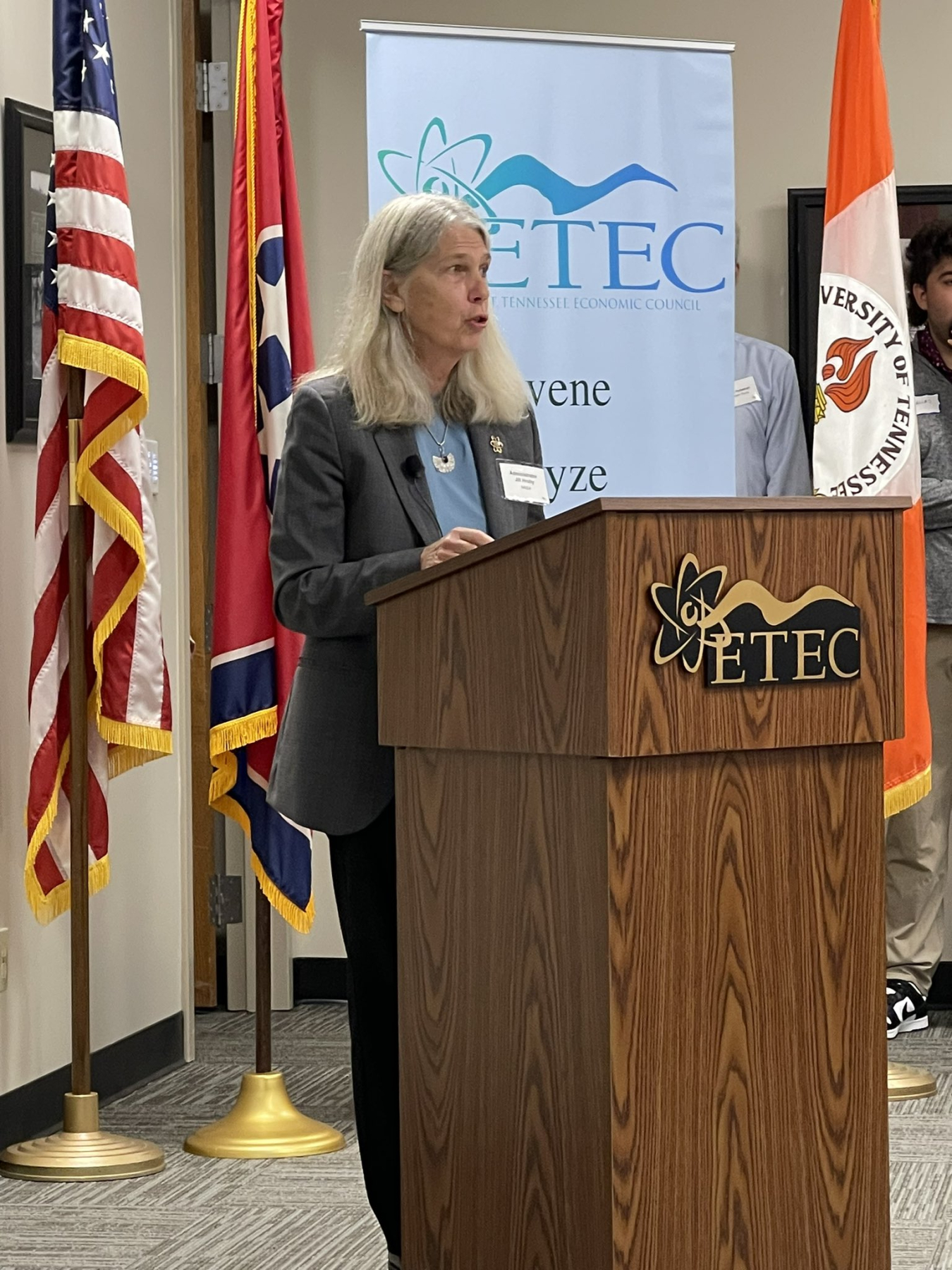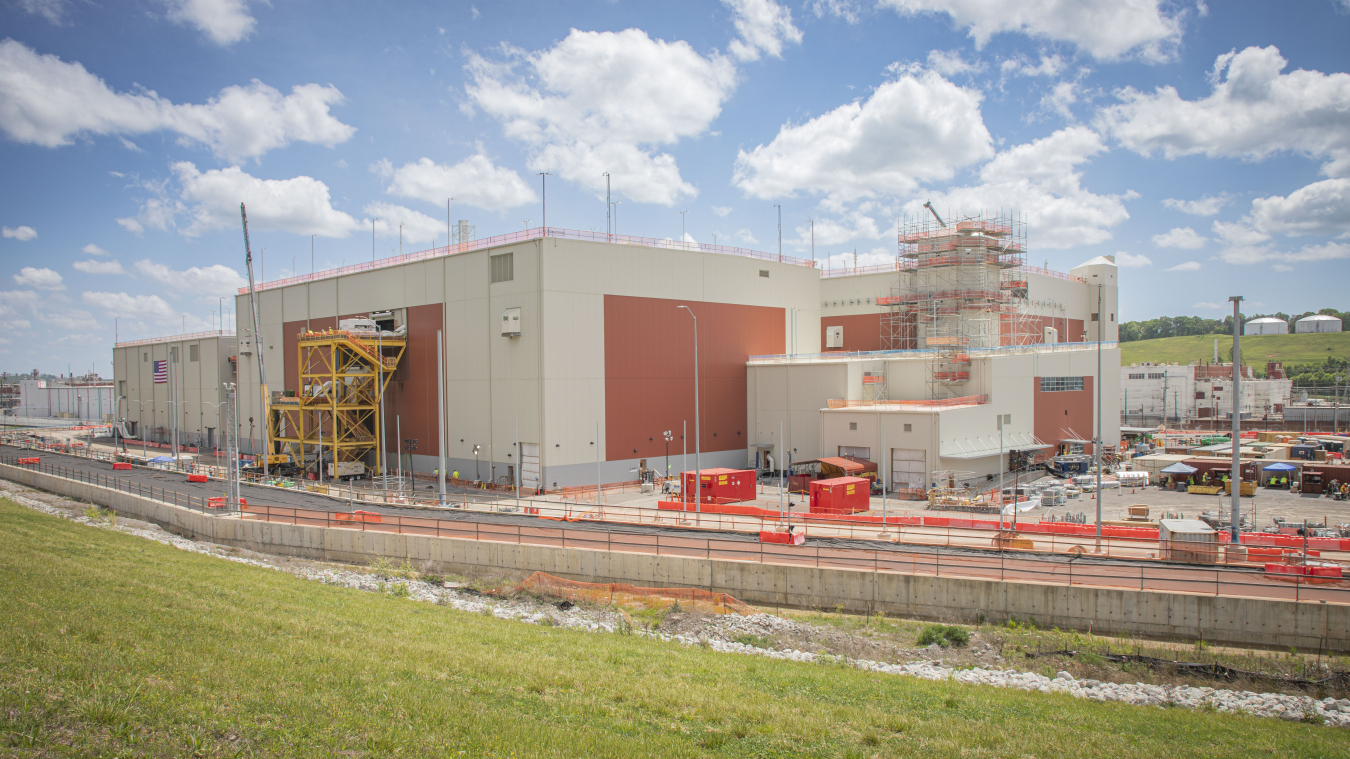NNSA Administrator Jill Hruby Delivered Remarks at East Tennessee Economic Council on Friday, August 23, 2024
National Nuclear Security Administration
August 23, 2024
Good morning, everyone! It’s a pleasure to be here today at the East Tennessee Economic Council. Thank you, Congressman Fleischmann for your introduction and for joining us today. Your tireless advocacy in Congress for DOE and NNSA has made possible so much of what we are accomplishing today, in East Tennessee and around the country. I want to also thank ETEC, Chairman Heckman, and the members of the board for inviting me this morning and for your support of our work.
Today, I want to bring you up to date on NNSA’s mission challenges and how the Y-12 National Security Complex, Oak Ridge National Laboratory, and collaborations throughout this region make vital contributions. I look forward to addressing your questions after my remarks.
East Tennessee, especially the Oak Ridge and Knoxville area, has been part of nuclear security history since the dawn of the atomic age. You may remember a scene in Oppenheimer where scientists at Los Alamos slowly accumulated marbles in a glass bowl representing enriched uranium. That work was carried out at Y-12 Plant in over 1,100 calutrons located in nine large process buildings not far from where we are now. At that time, 22,000 people were employed at Y-12.
Today, we face a new set of mission imperatives as difficult as any in history. The global dynamic includes an aggressive nuclear Russia and a rising nuclear China, as well as their military alliances with North Korea and Iran. We must consider a future with the potential for two nuclear peers, and we must now also prepare for a nuclear peer that is also an economic peer. Against that backdrop, NNSA remains committed to our core objectives of providing and maintaining a safe, secure, and reliable nuclear deterrent as the cornerstone of our national defense; reducing global nuclear threats while promoting the safe and peaceful use of nuclear energy; providing the U.S. Navy’s with militarily effective nuclear propulsion systems; and developing transformative science and technology to address emerging challenges and to stay ahead in discovery. In each of these areas, we are making needed investments in infrastructure and workforce to deliver on our missions into the future. Fundamentally, we need to re-establish and update an enterprise that was consolidated and atrophied after the end of the Cold War. The Y-12 Plant and the Oak Ridge National Lab play central roles in our missions today.
Regarding our nuclear deterrent activities, I will remind you that last year NNSA delivered more than 200 modernized warheads on time to the Department of Defense. Y-12 was key in making that happen. We are currently implementing seven simultaneous warhead modernization programs - covering all three legs of the nuclear triad, with two of these systems introduced in response to the global conditions this last year. This seven-system program of record is already being delivered and will continue through the mid-2030s.
I will not sugarcoat it; this is a daunting program pushing us to our limits every day. And our current infrastructure is not adequate to continue to meet the mission requirements. The NNSA infrastructure recapitalization effort is taking place in parallel with our warhead modernization programs. Our fiscal year 2025 budget calls for $5.9B for production modernization, about the same size as our weapon modernization program, and we are putting the funding to work on key projects across the nuclear security enterprise. A significant amount of that work is taking place at Y-12.
In fact, one of our largest and highest priority projects across the nuclear security enterprise is the Uranium Processing Facility, or UPF, at Y-12. And when I say large, I mean with a capital “L”. Over three thousand people are actively working on the site. The current focus of work is bulk electrical installation, with over 100 miles of electrical conduit and cable installed as of last month. For the upcoming Fiscal year 2025 budget, we are asking congress for $800M. Overall construction on UPF is now over 70% complete. Gloveboxes have been installed in the Main Process Building, and over 97% of procurements have been delivered. Construction is slated for completion in 2027, with full operations by 2031. UPF is necessary to replace an aging building that suffers from legacy contamination, facility degradation, and outdated technology and will provide a safer and more efficient environment for our workers. UPF is a critical test case for transitioning from new construction to manufacturing with nuclear material. I am certain that our leaders and workforce at Y-12 will succeed if we all keep our eye on the ball.

We are also making investments to reestablish a Uranium enrichment program in the United States for defense purposes; a capability lost at the end of the Cold War. Our priority is to produce Low Enriched Uranium to fuel tritium producing nuclear reactors. Since 2016, our efforts have been focused on research and development efforts at Oak Ridge National Laboratory through the Domestic Uranium Enrichment Centrifuge Experiment, or DUECE. Eventually, DUECE technology will be deployed in a pilot plant to mature and characterize the technology. Over the long-term, we hope to leverage this pilot plant for future Highly Enriched Uranium production for naval nuclear propulsion.
NNSA also counts of Y-12 for lithium, a key component for nuclear weapons systems. We are broke ground on the Lithium Processing Facility, or LPF, late last year and we expect to start construction in FY 2026. LPF will replace functions currently performed in Beta-2, an original Manhattan Project-era building that has degraded with time, presenting significant infrastructure and safety challenges to our operations. By contrast, LPF will be a modern, safe, and reliable 245,000 square foot facility. Like UPF, LPF will incorporate modern technologies aimed at improving efficiency and safety. New processes developed by the workforce at Y-12 will enhance efficiency, reduce operating costs, and increase our capacity to recover, recycle, and produce lithium materials and components.
I also want to take a moment to highlight a few smaller projects. A few years ago, we acquired the LeMond Carbon Facility in Oak Ridge, now named the John M. Googin Technology Development Facility. The acquisition of space outside the main campus was an important step in quickly establishing the ability to accelerate technology development and enhance collaboration with others around the Enterprise, using modern laboratory space and equipment. As technologies mature in the Technology Development Facility, we will move them to the Y-12 campus and begin the cycle anew.
Additionally, in January 2023 we held ribbon cutting ceremonies for a new fire station and new emergency operations center at Y-12. Together, that $68M investment replaced two buildings that had been in operation since the mid-1940s. Both facilities are structured to support 24/7/365 operations and will provide a significantly improved work environment for personnel. Additionally, the new fire station enhances our existing mutual aid support activities with Oak Ridge National Laboratory, the City of Oak Ridge, and Anderson County.
I also want you to know about some of the important nonproliferation and counterterrorism work taking place in the region. This work complements our nuclear deterrent efforts and is essential to global security.
Y-12 carries out important work in the disposition of weapons-grade material globally. Over the past two decades, Y-12 has removed more than 2,500 pounds of highly enriched uranium from partner countries. Additionally, in 2023, Y-12 supported NNSA’s nonproliferation work in 26 countries.
Counterterrorism and emergency preparedness and response activities and trainings are also a substantial piece of our work and investment in the region. Y-12 and Oak Ridge National Laboratory jointly maintain the capability to rapidly deploy technical experts and specialized equipment anywhere in the world on short notice in the event of a nuclear or radiological emergency to safely characterize, stabilize, package, and remove nuclear materials.
We were excited last January when the Oak Ridge Enhanced Technology and Training Center opened. This $35M facility is a joint federal and state funded project providing first responder training and technology demonstrations. It will house the Oak Ridge Institute for Global Nuclear Security and offer training on incorporating the latest nuclear security, detection, and nonproliferation technologies. The Center also houses the Tennessee Emergency Response Training Facility, which provides first-responder training for state and local personnel. This past April, the Center hosted the second annual Extended Reality Symposium which brought together experts in virtual and augmented reality, vendors, contractors, and educational institutions to hear and see the latest developments in training technology, deepening our engagement with local communities.
Finally, there’s the Naval Reactors mission. With 79 submarines and aircraft carriers fueled by nuclear power, NNSA’s mission to provide militarily effective naval nuclear propulsion systems is critical for providing the U.S. a competitive advantage. In May we celebrated the 75th anniversary of the naval nuclear propulsion program and its incredible record of technological advancement, environmental stewardship, and safe operations. Unsurprisingly, this mission also has key components in Tennessee. The uranium for these naval nuclear reactors come from these dismantled weapons. In partnership with BWXT Nuclear Fuel Services site in Erwin, Tennessee, we produce the fuel for naval nuclear reactors. BWXT Nuclear Fuel Services is one of just two U.S. locations licensed by the Nuclear Regulatory Commission to store and process highly enriched uranium. I visited the facility in May and was impressed by what I saw there.
Before I wrap up, I would like to take a moment to talk about our workforce. All the production equipment and advanced manufacturing capabilities in the world would be useless without a trained and committed workforce. We are determined to make the investments today not only to provide opportunities for the current generation, but for the generations that follow. With top-tier schools such as the University of Tennessee, Tennessee Tech, and Vanderbilt, East Tennessee produces exactly the kind of highly-motivated, highly-skilled, and dedicated professionals we are need. Roane State Community College also supports our mission through their chemical operator and nuclear worker programs. I’m proud of the collaborations that NNSA has directly and through our sites to bring in talent – from PhDs to craft workers to business professionals and administrative staff. We need every one of them.
Furthermore, this area’s commitment to nuclear companies is a big draw. With over 200 nuclear companies operating in Tennessee, and more than 150 in the Oak Ridge and Knoxville area alone, it is clearly a good place to work if you are interested in things nuclear. And there are signs that Tennessee is doubling down on its nuclear industry; whether that’s Governor Lee’s Executive Order last year creating a Nuclear Energy Advisory Council, Secretary Granholm visiting the TVA’s Clinch River Site, or your recent Nuclear Opportunities Workshop which included more than 600 participants with participation by DOE and NNSA.
I want to conclude by reemphasizing the challenges we face as a Nation at this moment. But we are rising to meet that challenge, and we are doing it in part thanks to the contributions and partnerships of the people, institutions, and capabilities of East Tennessee. I am thankful for these partnerships and confident in our success if we continue to work together.
Thank you and I look forward to your questions.

